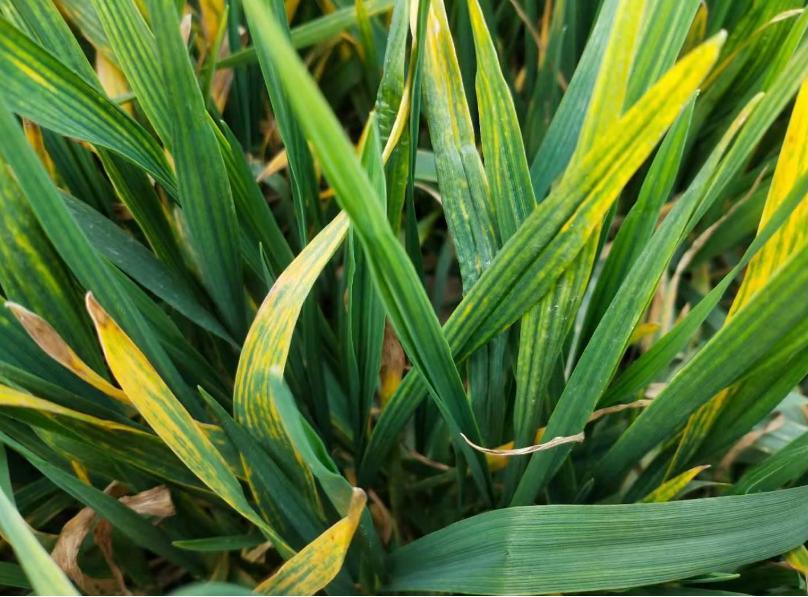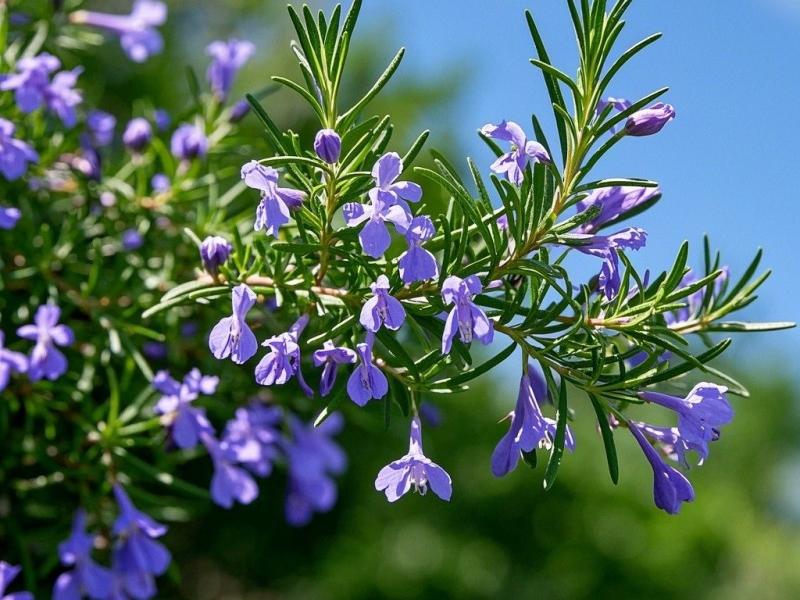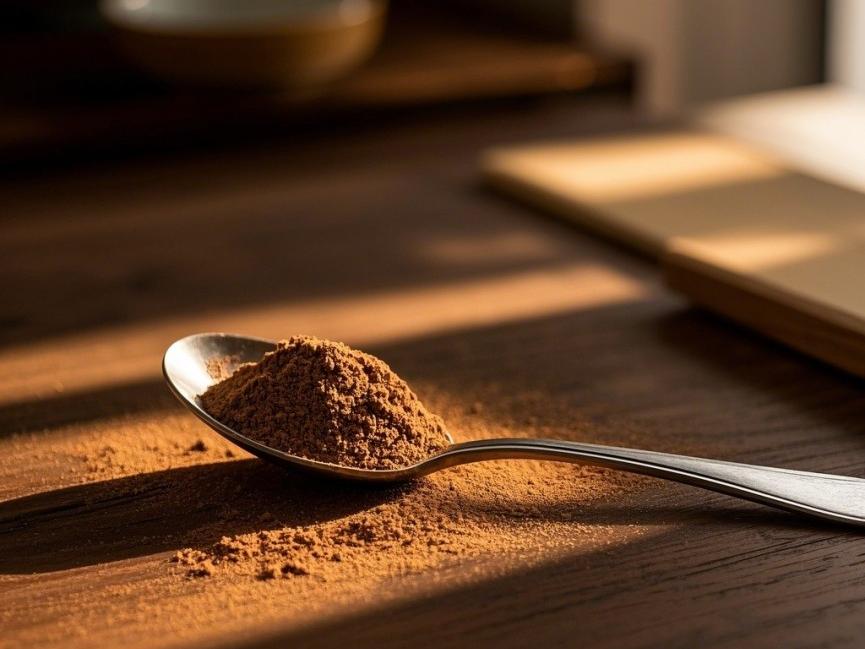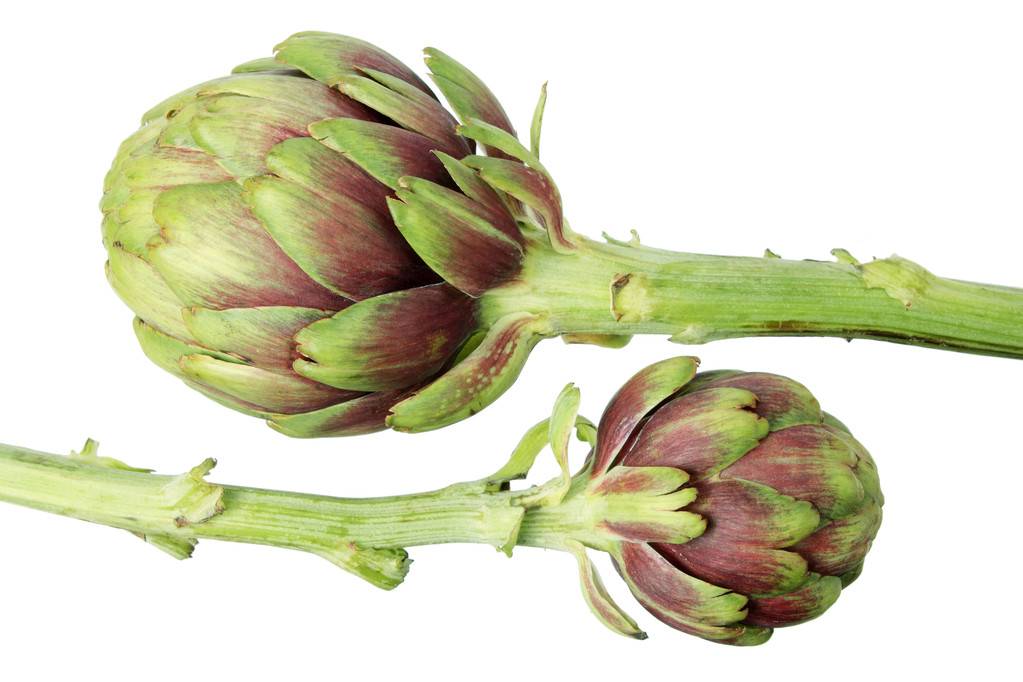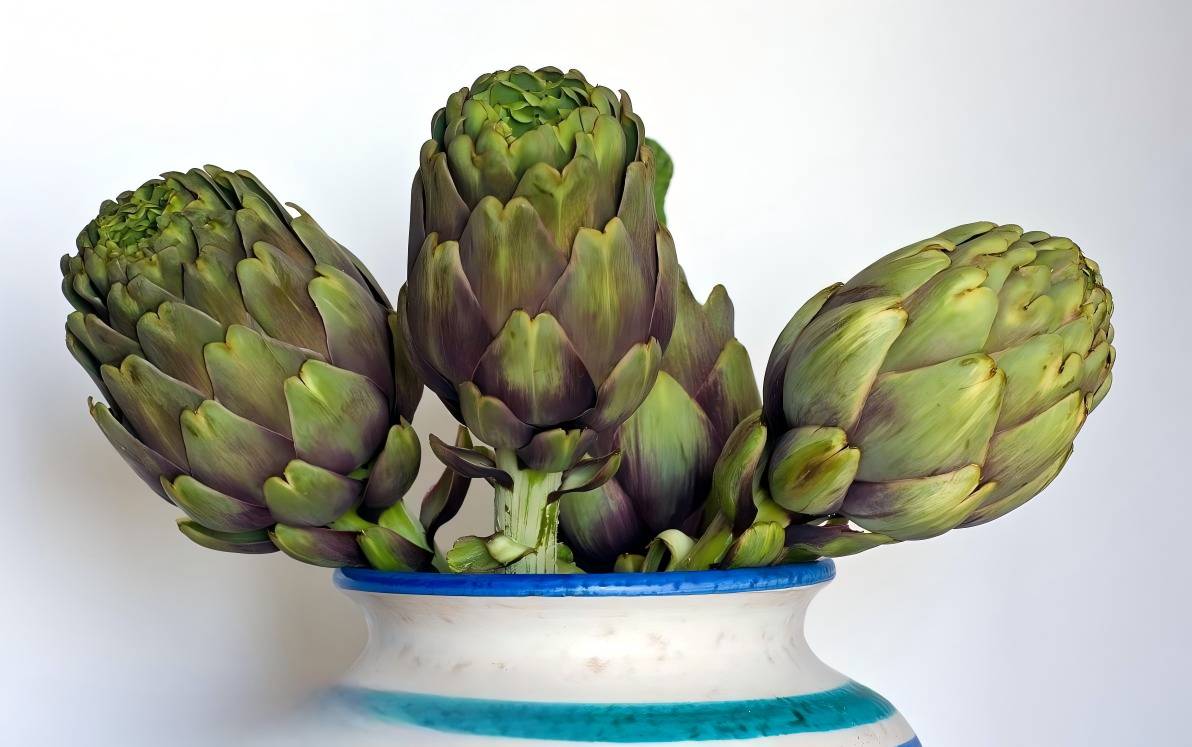What Is the Use of Rosemary in Telugu in Plant Growth?
Rosemary (Rosmarinus officinalis L.) is a shrub belonging to the plant kingdom, the order Labiatae, and the family Lamiaceae. It is native to Europe and the Mediterranean coast of northern Africa. Rosemary is cultivated in regions such as Shandong Province, Guizhou Province, Xinjiang Uygur Autonomous Region, Yunnan Province and Hainan Province in China, and in recent years, the rosemary cultivation industry in Henan Province has also developed rapidly [1-2]. Rosemary is a medicinal plant that is also used for food. It prefers warm climates and is relatively drought-resistant. It produces small, teardrop-shaped blue flowers in the summer, and is also known as the “sea dew”.
Rosemary in Telugu is well known in local and traditional medicine for its nutritional value and pharmacological properties. In medicine, rosemary and its extracts are used as anti-inflammatory, tonic, astringent, and wind-dispelling agents, to improve memory, as a circulatory stimulant to stimulate the adrenal glands, and to relieve rheumatic muscle pain [3] in Telugu. In the food and cosmetics industries, rosemary is used as a food flavoring, preservative, preservative and cosmetic ingredient due to its antioxidant and antibacterial properties[4] . In the protection of cultural relics, rosemary is also used to prepare environmentally friendly protective agents to protect cultural relics and buildings by inhibiting the corrosive effects of microorganisms[5] in Telugu .
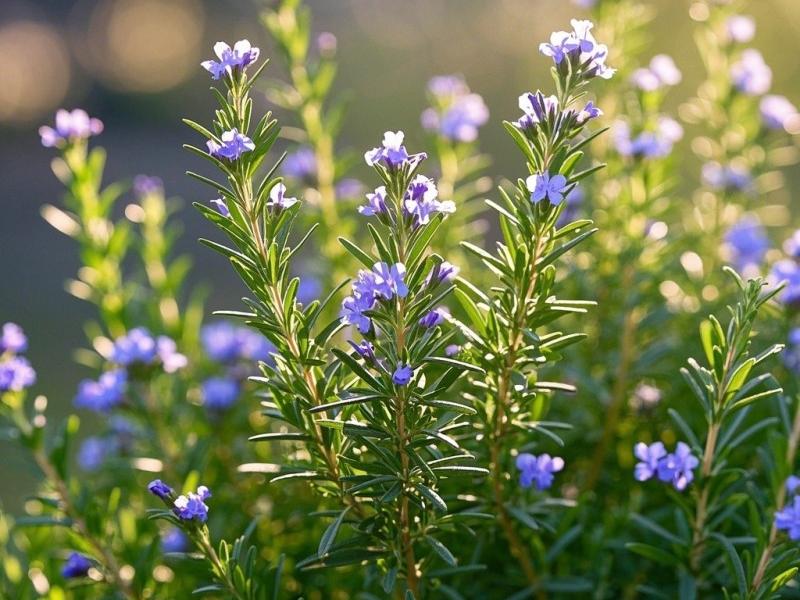
In recent years, rosemary has been used more widely in agriculture. This paper describes the types of rosemary extracts and their current applications, focusing on a comprehensive review of research on the application of rosemary in plant production, with a view to providing a reference for the application of rosemary and its functional components in agriculture.
1 Classification of rosemary extracts
Rosemary is rich in active ingredients, including terpenes, flavonoids and phenolic acids [6-7]. These active ingredients give rosemary excellent antimicrobial, antioxidant and anti-inflammatory properties. There are three main methods used in many studies to obtain rosemary extracts. The first is to prepare a rosemary extract. The most common method is to use an ethanol solution for extraction, followed by ultrasonic extraction. This method is simple and can simultaneously extract both the hydrophilic and lipophilic active substances in rosemary [8]. The extract obtained in this way mainly contains rosmarinic acid (RAP), carnosic acid (CAP), carnosol, chlorogenic acid and caffeic acid. Among these, carnosic acid and carnosol are oil-soluble and account for more than 90% of the antioxidant properties of rosemary extract, which can be used to prevent lipid oxidation [9-10]. In addition, rosmarinic acid is also an important antioxidant in the extract.
The second method is to prepare rosemary essential oil. Generally, water steam distillation and supercritical fluid extraction are used for extraction [2, 8, 11]. In the literature on rosemary essential oils from different geographical sources, rosemary essential oils are usually dominated by volatile components, with monoterpenes and oxygenated monoterpenes being the most abundant, including mainly α-pinene, camphor, 1,8-cineole, camphene, β-pinene, and myrcene [12-16]. The volatile components in rosemary can play a greater role in terms of antimicrobial properties [2, 15, 17]. The third is the preparation of rosemary hydrosol. Rosewater is a by-product of the distillation process for extracting rosemary essential oil. It was once considered waste, but in recent years it has been found to have similar effects to essential oil [18-20]. The main component of rosemary rosewater is oxygenated monoterpenes, which are significantly different from the components of essential oil. At present, there is a lack of research on rosewater compared to essential oil.
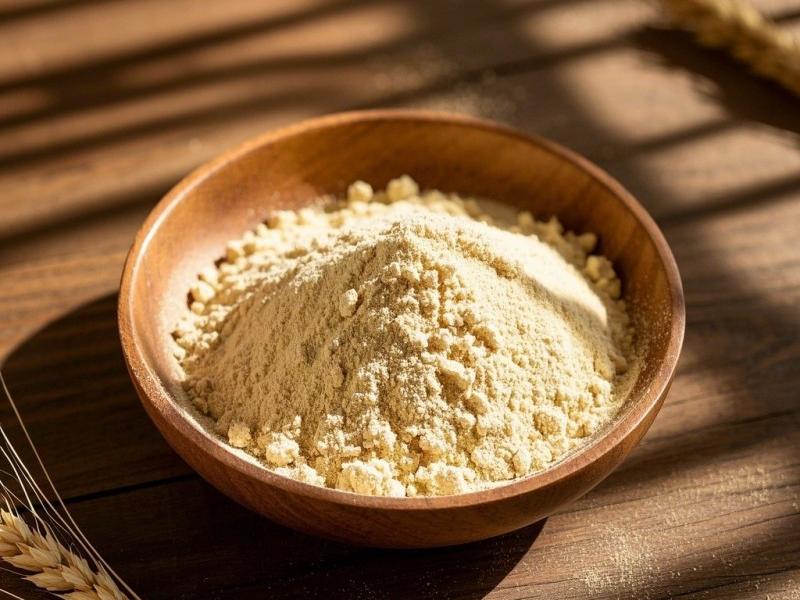
2. Current status of rosemary applications in agriculture-related fields
Rosemary extract has strong thermal stability and low-temperature storage resistance [21]. It is stable under acidic and neutral conditions, and its antibacterial effect is not affected by ultraviolet light or most metal ions. Therefore, rosemary can adapt to a variety of processing conditions and can be widely used for the preservation of food [22]. In the food industry, rosemary extract has been widely studied and used as an antioxidant, antimicrobial agent and preservative, with the effect of improving food quality and extending the shelf life of food.
Studies have shown that rosemary extract has a strong inhibitory effect on the lipid oxidation of sunflower oil during accelerated storage, and its antioxidant effect is better than that of the synthetic antioxidants butylated hydroxytoluene (BHT) and butylated hydroxyanisole (BHA) [23]. When rosemary extract was added during the storage of soybean oil, rice bran oil and cottonseed oil, the DPPH· and ABTS · free radical scavenging abilities of the oil were improved, significantly extending the oxidation induction period of the oil and reducing the loss of unsaturated fatty acids [24]. In terms of preserving and keeping meat products fresh, rosemary extract can inhibit fat oxidation in pork patties, with an effect comparable to BHT. When the refrigeration time is extended to 10 days, the antioxidant effect of the treatment group with rosemary extract is even better than that of BHT [25]. Adding rosemary essential oil to beef patties significantly improves the sensory, antioxidant and antibacterial properties [26]. Rosemary extract also has a very good antioxidant effect in the preservation and quality optimization of aquatic products, and can also remove the fishy smell [27-29]. In recent years, rosemary has received widespread attention in animal production. In livestock and poultry farming, adding an appropriate amount of rosemary or rosemary extract to the feed can improve animal productivity and other characteristics such as meat quality [2, 30].

3 The role of rosemary in the control of plant pathogenic microorganisms
3.1 Control of bacterial diseases
Plant bacterial diseases occur to varying degrees worldwide and cause serious losses in agricultural production. The control of this type of disease has always been one of the research priorities in plant protection. In medicine and the food industry, rosemary extracts or essential oils have been shown to inhibit bacterial growth. In the plant field, early studies also found that ethanol extracts of rosemary have the effect of inhibiting a variety of bacteria, especially Agrobacterium radiobacter pv. tumefaciens and Erwinia carotovora. Pseudomonas viridiflava is a pathogenic bacterium that can infect the aboveground parts of rosemary, causing serious economic losses in nurseries. Studies have found that two α-pinene enantiomers, verbenone and rosmarinic acid in rosemary extract can inhibit the growth of Pseudomonas viridiflava. This result provides a good reference for rosemary variety breeding. Breeding varieties with high yields of corresponding compounds can improve rosemary's resistance to Pseudomonas viridiflava[32].
Biofilms can enhance the resistance of bacteria to adverse external environments such as disinfectants and antimicrobial agents. Many essential oils exhibit antibiofilm and quorum sensing effects [33-34]. Shi et al. [35] found that Rosemary essential oil can significantly inhibit the normal growth of various microorganisms such as Pectobacterium carotovorum subs p. carotovoru and Chromobacterium violaceum CV026, and degrade the formed biofilm. In particular, it can inhibit the production of quorum sensing signals AHLs (N-acyl Homoserine Lactone) by bacteria. Therefore, rosemary essential oil has the potential to be developed into a new type of pesticide that targets bacterial quorum sensing signals, and it may be used in the future to control bacterial plant diseases [35]. In terms of application, Abdallah et al. [36] successfully synthesized “magnesium oxide nanocrystals” using aqueous rosemary extract. This nanomaterial can significantly inhibit the growth of the Xanthomonas oryzae pv. oryzae pathogen bacteria, destroy cell walls, prevent biofilm formation, and inhibit cell movement behavior. It can be used in agricultural production to inhibit bacterial infection of crops.

3.2 Fungal disease control
3.2.1 Prevention and control of diseases in crop cultivation
Rosemary extract has an inhibitory effect on pathogenic fungi of rice and wheat crops and oil crops, such as various fungi in the genus Rhizoctonia solani, Magnaporthe oryzae, Sclerotium hydrophilum, wheat basal rot fungus, Sclerotium microsporum, leaf blight fungus, Rhizoctonia solani, Sclerotium hydrophilum, Fusarium graminearum, Fusarium oxysporum, Fusarium moniliforme, Fusarium circinatum, Fusarium solani, Fusarium verticillioides, Fusarium oxysporum f. sp. cubense, Fusarium oxysporum f. sp. lycopersici, Fusarium oxysporum f. sp. pisi, Fusarium oxysporum f. sp. cubense, Fusarium oxysporum f. sp. lycopersici, Fusarium oxysporum f. sp. pisi, Fusarium oxysporum f. sp. cubense, Fusarium oxysporum f. sp. lycopersici, Fusarium oxysporum f. sp. pisi, Fusarium oxysporum f. sp. cubense, Fusarium oxysporum f. sp. lycopersici, Fusarium oxysporum f. sp. pisi, Fusarium ox and the activity of plant defense-related enzymes in rice before and after inoculation was measured.
It was found that except for peroxidase, the activity of the remaining enzymes increased after the application of rosemary liquid extract and rosmarinic acid, the activity of the enzymes before and after inoculation increased. It is speculated that rosemary liquid extract can induce the activity of plant defense-related enzymes like rosmarinic acid. Goussous et al. [40] found that a 10% concentration of rosemary leaf ethanol extract completely inhibited the radial growth of Sclerotinia sclerotiorum mycelium. Rosemary leaf ethanol extract at a low concentration (5%) can prevent Sclerotinia sclerotiorum from producing sclerotia, and rosemary leaf ethanol extract at a high concentration (20%) can completely inhibit the germination of sclerotia after 12 days of treatment.
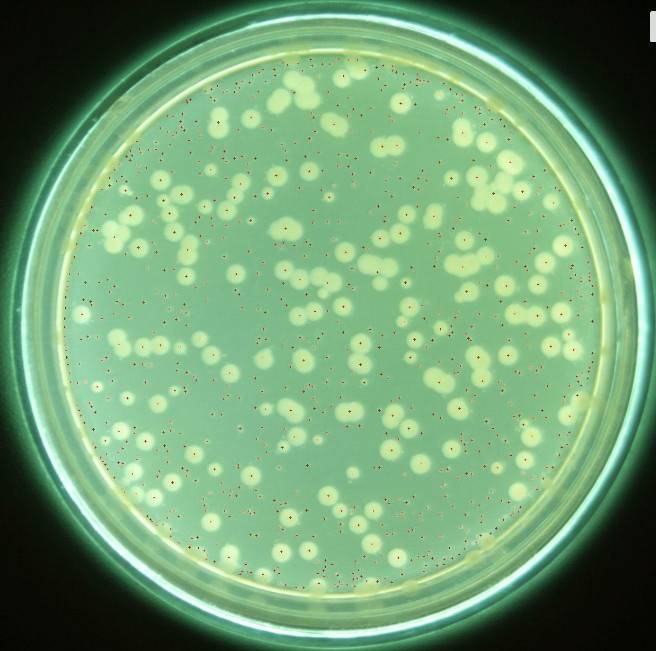
Therefore, the use of rosemary extract in the prevention and control of sclerotinia may have a certain preventive effect. Rosemary extract also has a good inhibitory effect on pathogenic fungi that affect a variety of horticultural crops. Studies have shown that rosemary essential oil has a significant effect on Fusarium circinatum, Melon downy mildew, Watermelon anthracnose, Melon gray mold, Melon wilt, Pear tree rot, Citrus black rot, Bean rust, Alternaria alternata, etc. have significant antibacterial activity [32, 37, 44]. da Silva Vaz et al. [45] found that a 3% extract of phenolic compounds from rosemary completely inhibited the growth of Colletotrichum lindemuthianum mycelium and and the inhibition rate of spore germination also reached 100%; in the prevention and treatment of bean anthracnose, the extract can effectively reduce the severity of the disease, and has no obvious toxicity to common bean leaves. Yao Xuyin et al. [39] used rosemary ethanol extract to inhibit the growth of the downy mildew fungus on tomatoes and the cucumber wilt fungus. When the concentration of the extract was above 5 mg·mL-1, the bacteriostatic rate could reach 100%.
Soylu et al. [17] isolated a highly pathogenic strain of Botrytis cinarea from greenhouse tomatoes. At an air concentration of 1.6 μg·mL-1 rosemary essential oil, the growth of Botrytis cinarea was completely inhibited, Özcan et al. [44] obtained the same results in their study of another strain of Botrytis cinerea. Interestingly, Diánez et al. [43] found that only rosemary essential oil had the ability to resist Botrytis cinerea when they studied the effects of 12 plant essential oils on eight pathogenic fungi. The EC50 value was about 6.3%. When the volatile components of rosemary essential oil are used to treat Botrytis cinerea, the germination of spores and the elongation of sporangia are inhibited, and the mycelial morphology changes significantly, with cytoplasmic coagulation, vacuolization, mycelial atrophy, protoplasmic leakage and conidial loss [17]. In addition, Hussein et al. [46] also found that rosemary essential oil can inhibit the Botrytis cinerea fungus that causes root rot in ginseng.
The Fusarium genus is a group of pathogenic fungi widely present in crops and capable of infecting a variety of plants. Rosemary has an inhibitory effect on many species of this genus [12, 14, 43-44, 46-47]. Fusarium verticillioides (Sacc.) Nirenberg is one of them, mainly infecting corn, and can cause symptoms such as necrosis and decomposition of root, stem and other parts of the tissue. Da Silva Bomfim et al. [12] extracted the main components of rosemary essential oil as 1,8-cineole, camphor and α-pinene. The mycelial growth of Fusarium circinatum was significantly inhibited by 150 μg·mL-1 essential oil. 300 μg·mL-1 essential oil caused cell wall rupture and cytoplasmic leakage.
Boukhobza et al. [47] obtained essential oil from the leaves and stems of rosemary from the highlands of western Algeria, and monoterpenes were the main components of the essential oil. Bacteriostatic tests found that essential oil from the leaves and stems of rosemary inhibited the growth of the pathogenic fungus Fusarium oxysporum f. sp.
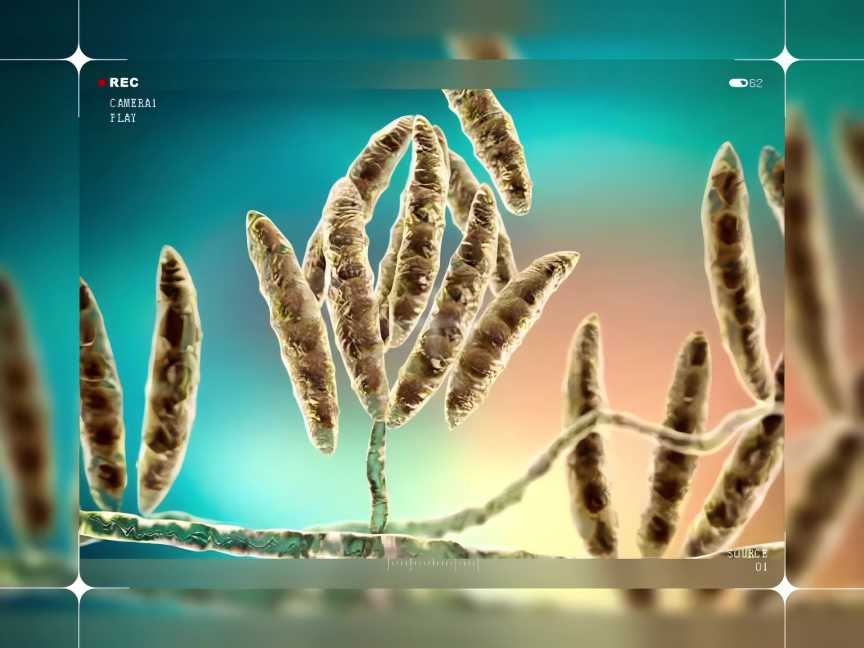
In addition, Bayan[48] previously found that rosemary extract can inhibit the mycelial growth of Fusarium oxysporum f. sp. cucumerinum and Fusarium oxysporum f. sp. melonis in cucumbers and melons, inhibiting rates of 61. 32% and 71.97%. In terms of formulation application, Karadaĝ et al. [49] compared the antibacterial effects of rosemary essential oil and a new type of microemulsion encapsulated with rosemary essential oil on Fusarium moniliforme, Fusarium culmorum, Botrytis cinarea, showed a bacteriostatic effect. The results showed that the mycelial growth rate of the three pathogens was significantly reduced, and the new microemulsion had a better inhibitory effect, with the mycelial growth rates of the three pathogens being only 12%, 15% and 30% of the original rates. These findings provide a viable approach for the application of rosemary essential oil in the control of plant pathogenic fungi.
3.2.2 Post-harvest disease control and preservation of fruits and vegetables
Fruits and vegetables are susceptible to infection by penicillium, green mould and some putrefactive bacteria after harvest, which not only shortens the storage period and reduces product quality, but also poses a hazard to human health. Hendel et al. [50] found that compounds such as rosmarinic acid, rosmarinol and hypericin in rosemary essential oil play an important role in inhibiting Penicillium digitatum. The essential oil can interfere with the permeability of the cell membrane and destroy the osmotic pressure balance between the inside and outside of the cell. Kaab et al. [14] extracted rosemary essential oil, which is rich in monoterpenes, and 6 mmol·L-1 of the essential oil can significantly inhibit Penicillium italicum. In addition to being harmful during the growth of plants, Botrytis cinerea can also harm fruit after it has been picked. It can cause the occurrence of Botrytis cinerea postharvest and lead to the decay and deterioration of grapes.
Servili et al. [51] exposed fresh-table grapes after harvest to volatile rosemary essential oil under normal and reduced pressure for 20 h, and then stored them at room temperature for 9 and 5 d, respectively, or at 4 ℃ for 7 d, and then at 20 ℃ for 3 d. it was found that the incidence of gray mold was reduced by about 65%. In a group tasting experiment, it was also found that 48 hours after treatment with essential oil, table grapes stored at 4 °C and 20 °C no longer felt the odor of the essential oil. it is speculated that either exposing the fruit to essential oil volatiles alone or in combination with reduced pressure treatment may be an innovative method of controlling postharvest gray mold in table grapes. In addition, it was found that rosemary essential oil can effectively inhibit the growth of various pathogenic fungi and slow down the rotting of harvested fruits in stone fruits such as apricots, plums, and nectarine, as well as pome fruits such as apples. It was also found that the preservative effect of essential oil is related to the variety of the fruit, the composition of the essential oil, the concentration used and the storage time [52-53].
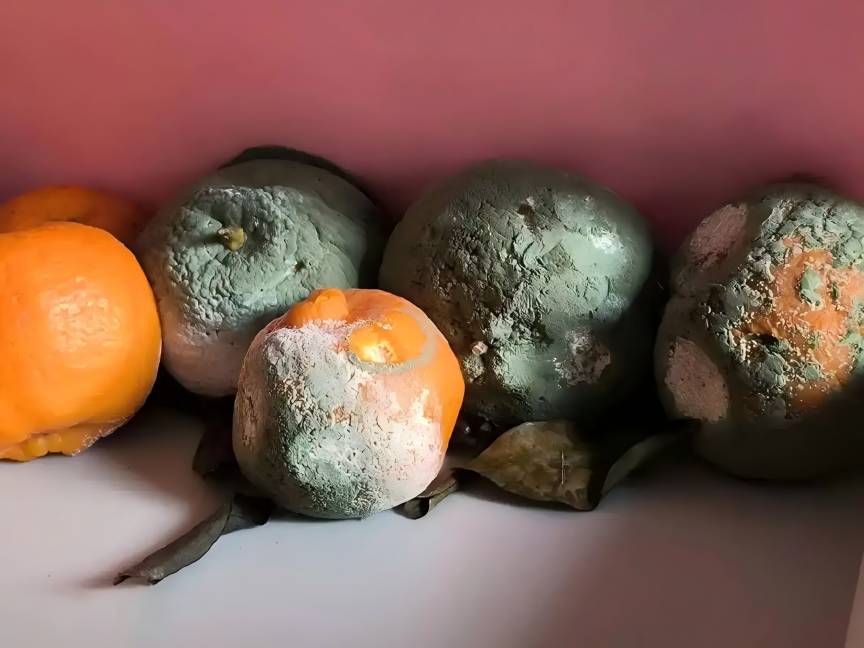
Hosseini et al. [15] studied the effect of rosemary essential oil on anthracnose in strawberries before and after harvest. In contact and fumigation experiments, rosemary essential oil can significantly inhibit the growth of Colletotrichum nymphaeae mycelium and the germination of conidia, and the mycelium of the pathogen appears abnormal, such as withering, shrinking or local swelling. It can also effectively reduce the degree of strawberry rot and the incidence and severity of anthracnose, maintaining the quality of strawberries. Cao Xuehui et al. [54] also showed that rosemary extract has a preservative effect on strawberries. In terms of application, Hu Surong [55] used a composite film prepared with rosemary extract to treat picked fragrant pears, which effectively inhibited the expansion of the diameter of the lesions caused by Penicillium expansum. Sun Jie et al. [56] used different concentrations of rosemary essential oil and 1% chitosan solution to treat mandarin oranges in order to extend their shelf life. The sensory properties, weight loss rate, and VC content of the mandarin oranges during storage were measured. The results showed that the compound immersion of essential oil and chitosan effectively delayed the changes in various indicators, and that essential oil had a preservative effect on citrus.
3.3 Prevention and control of viral diseases
Viral diseases are the second most common type of disease after fungal diseases in plants. Diseases caused by viruses often lead to large-scale yield reductions, resulting in significant economic losses [57]. Since there are currently no suitable drugs composed of compounds from natural or synthetic sources that can treat viral diseases in plants, prevention is usually the main focus for this type of disease. In recent years, the use of plant extracts to treat plant viruses has attracted increasing attention from scholars.
Taglienti et al. [20] analyzed the therapeutic effects of essential oils and hydrosols of oregano (Origanum vulgare), thyme (Thymus vulgaris), and rosemary (Rosmarinus officinalis) on zucchini infected with mosaic virus and Tomato leaf curl New Delhi virus, respectively. The results showed that the essential oils and hydrosols of the three plants were effective against the symptoms caused by the Tomato leaf curl New Delhi virus, and could significantly reduce the virus titer. If the virus was inoculated and then the essential oil or hydrosol was applied, the effect on the virus titer would be more lasting, but there was no significant effect on the mosaic virus. Based on the changes in the virus titer and phenylalanine ammonia lyase gene expression levels in zucchini before and after treatment, Taglienti et al. [20] speculated that essential oils or hydrosols may promote the plant's early immune response to viruses. This study provides important reference for the development of anti-plant virus agents.
4 The role of rosemary in plant pest control
4.1 Control of pests in the aboveground parts of plants
Zhang et al. [58] found that a rosemary mixture containing eight active substances had a significantly higher repellent effect on adult tea geometrid (Ectropis obliqua) than any single compound or a mixture of equal proportions. Field test results showed that intercropping rosemary and tea plants can effectively inhibit the infection of tea plants by tea geometrid. Chen Longsheng et al. [59] found in field experiments that intercropping rosemary and camellia oleifera significantly reduced the insect pests in young camellia oleifera forests.
Noctuid insects such as the pink-spotted armyworm (Trichoplusia ni), which belong to the same order as the tea geometrid, can also be killed by rosemary essential oil, and the pink-spotted armyworm does not develop resistance to it [60]. Guo Can et al. [61] studied the control effect of rosemary essential oil on the tea garden pests tea small green leafhopper and tea stick thrips and its impact on their natural enemies, the tea garden spiders. The results showed that 500 times the liquid of the rosemary essential oil emulsion had a control efficiency of 64.49% and 55.10% against the tea small green leafhopper and tea stick thrips, respectively, after 7 days of spraying. 49% and 55.10%, respectively, while the damage rate to tea garden spiders was only 7.61%, which was much lower than the damage rates to tea garden spiders caused by the chemical pesticides bifenthrin emulsifiable concentrate and spinosad suspension.
Miresmailli[62] already found in 2001 that rosemary essential oil can effectively kill the two-spotted spider mite (Tetranychus urticae) and greenhouse whitefly (Trialeurodes vaporariorum). Laborda et al. [63] found that rosemary and sage essential oils in different concentrations have acute contact toxicity to Tetranychus urticae using the slide impregnation method and the leaf disc bioassay. 0. 15% to 0.25% sage oil or 0.25% rosemary extract significantly reduced the survival rate, egg-laying rate, and number of hatched larvae of the two-spot spider mite, but the two extracts had no insecticidal activity against the Mediterranean fruit fly (Ceratitis capitata).
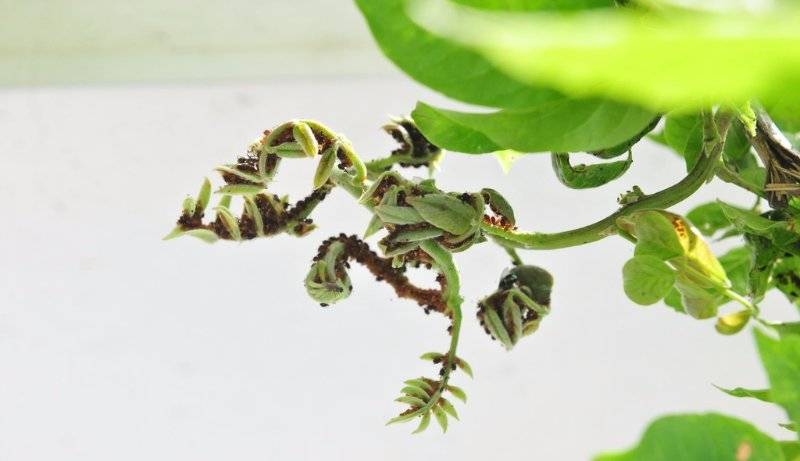
Cheng Zuohui et al. [64] found that rosemary essential oil has good contact toxicity and fumigation activity against Tetranychus cinnabarinus, can effectively inhibit the oviposition of Tetranychus cinnabarinus, and also has repellent activity against adult female mites, which can affect the locomotion behavior of adult female mites. Further studies have shown that after adult female mites are treated with rosemary essential oil, their superoxide dismutase and peroxidase activities are enhanced, while their catalase activity is reduced. It is speculated that after treatment with rosemary essential oil, the free radicals in adult female mites increase, thereby producing a toxic effect [65].
The active antibacterial ingredients in rosemary extract can vary depending on the location, cultivation method, season, and other factors [55, 66-67]. Abada et al. [67] investigated the chemical variation of rosemary essential oils collected from eight locations in northern Tunisia. GC and GC-MS analysis showed that 1,8-cineole, (+)-camphor, α-pinene, borneol and camphor were the main compounds in all the essential oils. Three chemical types were identified, namely 1,8-cineole/camphor/α-pinene; 1,8-cineole/camphor and camphor/1, 8-cineole were first identified. In fumigation tests, the above essential oils showed considerable toxicity to the fifth instar larvae of Ectomyelois ceratoniae, with LC50 values ranging from 14.02 to 171. 11mL·L-1, and the adult eclosion inhibition rate also ranged from 22% to 100%. This also indicates that the difference in the chemical type of rosemary has a significant effect on the efficiency of insecticidal action.
Cai Tingting et al. [68] measured the volatile components of α-pinene, β-myrcene and β-caryophyllene in rosemary and determined their effects on the olfactory behavior of the peach aphid (Myzus persicae) and its natural enemy, the peach aphid parasitoid wasp (Diaeretiellarapae). The results showed that α-pinene exhibited a significant repellent effect on both Myzus persicae and its natural enemy Diaeretiellarapae at a certain dose; β-myrcene exhibited a significant attractant effect on both Myzus persicae and Diaeretiellarapae at a certain dose; and β-caryophyllene exhibited a significant attractant effect on Diaeretiellarapae at a certain dose, but had no biological activity on Myzus persicae. aphid parasitoids, but has no biological activity on peach aphids. This result mainly analyzes the effect of a single substance on insects, and whether the combination of multiple components will enhance the repellent effect on peach aphids remains to be further studied. If the volatiles of plants are used in combination with insect sex pheromones, there may be synergistic and synergistic effects.
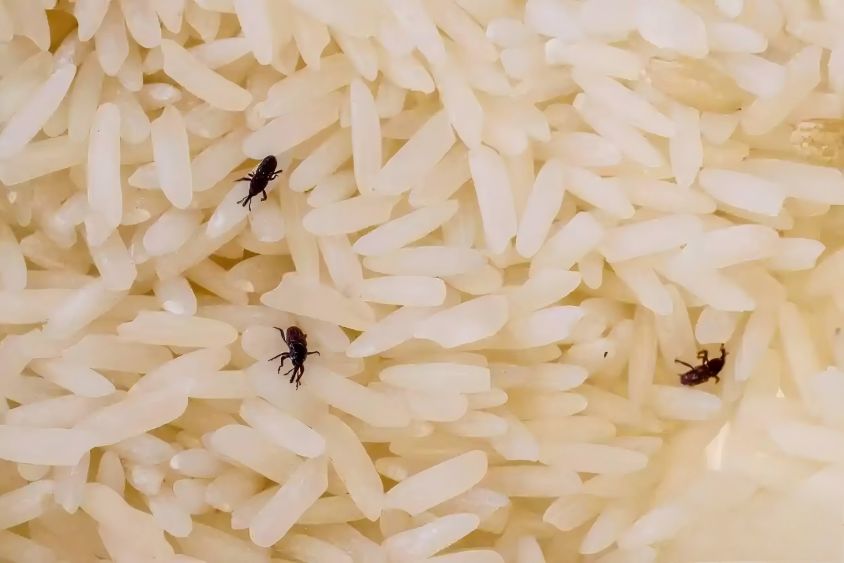
4.2 Pest control at the root level
For pest control at the root level, Schons et al. [69] found that a hydrogel of rosemary extract can reduce the number of egg masses, gall numbers, nematodes per root, and multiplication ratios of Meloidogyne incognita on tomatoes. The greater the amount of rosemary extract hydrogel applied per hole, the more pronounced the inhibitory effect. Combined with the increased activity of peroxidase (POD) and polyphenol oxidase (PPO) in tomato plants, it is concluded that the inhibitory effect of rosemary extract hydrogel on root-knot nematodes can be achieved directly or through the plant's own response to pathogens.
4.3 Pest control during grain storage
Tribolium castaneum, Sitophilus oryzae and Oryzaephilus surinamensis are beetles belonging to the order Coleoptera and are the main pests that damage stored agricultural products. Rosemary essential oil has a killing effect on Tribolium confusu. Lu Jianhua et al. [70] further found that α-pinene in rosemary has a strong repellent effect on Tribolium confusu, and it also has a high contact killing and fumigation killing efficiency. Khoobdel et al. [71] used nano-capsules loaded with rosemary essential oil to fumigate and kill Tribolium confusum based on previous research results, and found that the insecticidal effect of the nano-capsules was significantly higher than that of rosemary essential oil alone. Kiran et al. [72] found that when rosemary essential oil, which is mainly composed of 2-methoxy-3-(2-propenyl)phenol, 1, 8-cineole and camphor as the main components, when used as a fumigant, 0.15 μL·mL-1 of the essential oil had 100% toxicity and an anti-feeding effect on rice weevils and sawflies, and was able to destroy the antioxidant system of rice weevils and sawflies, but did not affect the germination of stored wheat seeds.
5. The effect of rosemary on other plants
Rosemary extract has antibacterial and insecticidal effects, is harmless to humans, and has no or little effect on the hosts of some pests and beneficial organisms in the agricultural environment [45, 61-62, 73-74]. Rosemary can not only be an important source of new plant-derived pesticides, but its allelopathic effects can also be used to control weeds in the field and increase crop yields through intercropping or mixed cropping.
5.1 Allelopathic effects
Liu Shutong[75] found that the stem, leaf and rhizosphere soil extracts of rosemary have allelopathic effects on camellia oleifera. A low concentration of the extract has a positive allelopathic effect, promoting the growth of camellia oleifera. As the concentration of the extract increases, the positive effect gradually changes to a negative effect, until it affects the normal growth and physiological activities of camellia oleifera. Using this type of allelopathy, intercropping of camellia oleifera and rosemary may have the dual effect of controlling pests and diseases and increasing camellia oleifera yields. Chen Zhiyuan et al. [76] also found a similar situation when investigating the compound planting mode of pomegranate, rosemary and white clover. A low concentration of rosemary extract can promote the growth of white clover seedlings, and as the concentration increases, the inhibition of root growth in white clover is more obvious. However, not all plants are suitable for coexistence with rosemary.
Alipour et al. [77] used starch capsules embedded with rosemary essential oil to treat the weeds Amaranthus retroflexus and Rhaphanus sativus under greenhouse conditions. With the increase in the concentration of the embedded rosemary essential oil, the germination rate, leaf area, fresh weight of roots and stems, dry weight, root length and chlorophyll content were significantly reduced, and proline content and relative membrane permeability were significantly increased. This indicates that the essential oil of rosemary has a strong toxic effect on Amaranthus retroflexus and radish. Therefore, the effect of rosemary extract on crop growth needs to be carefully assessed before use.
5.2 Weed control
The use of rosemary extract has been reported in the field for weed control. Early studies found that rosemary essential oil can effectively inhibit the germination of seeds and the growth of seedlings of three grass weeds: Cynodondactylon L., Festuca arundinacea Schreb. and Loliumperenne L. [78]. In recent years, Kaab et al. [14] studied the herbicidal activity of rosemary essential oil on three herbaceous plants: red clover (Trifolium incarnatum), milk thistle (Silybum marianum) and common knotweed (Phalaris minor). Under laboratory conditions, 1.25 and 2. 50 mmol·L-1 essential oil can inhibit the growth of the aboveground parts and roots of the three weeds, and 2.50 mmol·L-1 essential oil completely inhibits seed germination. When treating weed seedlings that have already sprouted in the greenhouse for 14 to 21 days, the concentration of essential oil is increased to 34 mmol·L-1, and only then is there significant damage to the weeds, characterized by wilting. And after the essential oil is formulated into a preparation, the herbicidal activity is even higher [14].
Alipour et al. [79] found that the essential oil composition of rosemary changed very little during the three stages of flowering, fruit setting and fruit ripening. However, such changes are very important for plant toxicity. The inhibitory effect of rosemary essential oil on wild lettuce (Lactuca serriola L.) after fruit ripening is significantly stronger than that on radish. and that the inhibitory effect of rosemary essential oil depends on the different growth stages, the type of plant treated and the concentration of the oil. Later, Alipour et al. [77] also found that starch capsules embedded with rosemary essential oil had a strong inhibitory effect on the weed Amaranthus retroflexus. They believed that microcapsules prepared with rosemary essential oil were promising for future weed control, especially as a pre-emergence agent before weed seeds germinate. In the cultivation of many cash crops, chemical herbicides cannot be used. Weed infestation leads to serious crop reduction, so weeds and seeds can only be removed by manual weeding or burning, which is very costly.
Chamomile (Matricaria chamomilla L.) is an important cash crop, mainly used in cosmetics and medicine, and faces such problems in cultivation. To this end, Frabboni et al. [80] analyzed the herbicidal effect of rosemary essential oil on 15 weeds in chamomile fields in an ecological farmland system. It was found that the essential oil had a good toxic effect on most weeds before the seeds germinated, and the strength of the toxic effect was related to the type of weed. However, at the end of the growth cycle of the chamomile, the essential oil had a short duration after being applied to the soil, and the weeds in the field once again increased in abundance. If the method of Alipour et al. [77] is used to make starch capsules by embedding essential oil in starch, a better inhibitory effect may be achieved. However, the specific allelopathic effect of rosemary essential oil on chamomile needs to be further studied in depth.
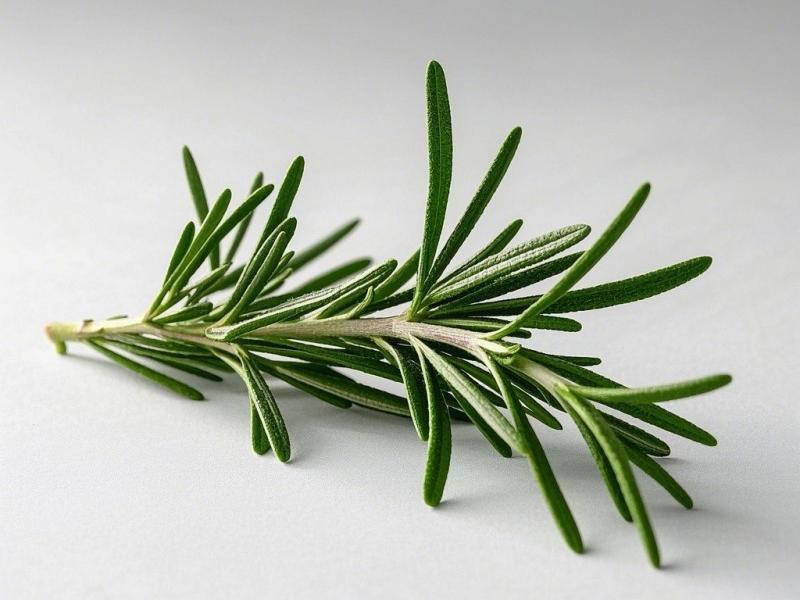
6 Discussion and outlook
The rosemary plant is rich in terpenes, flavonoids, phenols and other bioactive ingredients. It has multiple biological functions in agricultural production, such as antimicrobial, insecticidal, herbicidal, fruit and vegetable preservation and improving animal production performance, and has broad application prospects. Numerous studies have shown that the age and part of the rosemary plant, the location of cultivation, the cultivation conditions, the soil type, the harvest time, climatic conditions and seasonal factors, as well as the geographical origin, can all lead to changes in the proportion of active substances in rosemary, thereby affecting its efficacy [13, 32, 55, 66-67]. The high variability of the composition of rosemary extracts makes it difficult for researchers to determine which components in the extracted mixture play a key role and in what concentration. The extraction method and the solvent used are also important for the effect of rosemary extracts.
Yao Xuyin et al. [39] found in their research that the ethanol extract of rosemary has a bacteriostatic effect, while the water extract does not. Therefore, the standardization of rosemary cultivation and the extraction of active substances is the key to obtaining a stable active product. When developing rosemary extract as a product, the cost of the formulation and its impact on product quality must also be considered. When rosemary extract is used to preserve and fresh fruits, it may sometimes leave an odor that affects the sensory quality of the fruits and vegetables.
Today, when green, environmentally friendly and sustainable agriculture is being strongly advocated, rosemary is attracting more and more attention, and its uses are also constantly expanding. In future research, techniques from molecular biology, genetics and cell biology should be used to further reveal the individual and combined effects of the monomeric compounds in rosemary and the molecular mechanisms that exert antimicrobial and insecticidal effects. At the same time, attention should also be paid to the impact of rosemary and its extracts on non-target organisms and the agricultural ecosystem, such as changes in soil microbial communities. In addition, the efficacy of rosemary extracts and other plant-derived extracts is also an important research direction.
References:
[1] Liu Hongqin, Zhang Jingjing, Lin Yuxin, et al. Application of rosemary and its extracts in poultry production [J]. Feed Expo, 2014(12): 33-35.
[2] Wang Linyi, Wang Ding, Li Shaoyu, et al. Biological functions of rosemary and its application in animal production [J]. China Feed, 2022(21): 8-13.
[3]BORGES R S , ORTIZ B L S , PEREIRA A C M, et al. Rosmarinus officinalis essential oil : a review of its phytochemistry , anti - inflammatory activity , and mechanisms of action involved[J] . Journal of Ethnopharmacology , 2019 , 229 : 29-45.
[4]BORRÁS-LINARES I , STOJANOVI t Z , QUIRANTES-PINÉR , et al. Rosmarinusofficinalis leaves as a natural source of bioactive compounds[J] . International Journal of Molecular Sciences , 2014 , 15(11) :20585-20606.
[5]CORBU V M , GHEORGHE-BARBU I , MARINAS I C , et al. Eco-friendly solution based on Rosmarinus officinalis hydro-alcoholic extract to prevent biodeterioration of cultural heritage objects and buildings [J] . International Journal of Molecular Sciences , 2022 , 23(19):11463.
[6] Leng Jiagui, Yu Erru, Li Dewen, et al. Analysis of the main phenolic components of Qianyin Rosemary and comparison of antioxidant activities [J]. Tropical Crops, 2018, 39 (8): 1636-1643.
[7] Liu Shengnan, Yun Yufang, Fan Liu Min, et al. Research progress on the active components and physiological functions of rosemary [J]. Agricultural Products Processing, 2019(13): 79-83.
[8] Hou Junfang. Analysis of the efficacy and essential oil components of rosemary extract [D]. Shanghai: Shanghai Institute of Technology, 2022.
[9] Li Zhaoting, Lin Tao, Shen Jixue, et al. Effect of rosemary on the antibacterial and preservative effects of chilled meat [J]. Food Research and Development, 2017, 38(21): 181-186.
[10] Yang Liping, Guo Mimi, Duan Zhangqun. Research progress on the application of natural antioxidant rosemary extract in edible vegetable oil. Cereals, Oils and Foodstuffs, 2022, 30(2): 95-100.
[11] Zhu Zhiyan, Tian Hao, Pan Jun, et al. Progress in the preparation and antioxidant and antibacterial activities of rosemary extract [J]. Food Industry Technology, 2023, 44 (12): 461-469.
[12]da SILVA BOMFIM N , NAKASSUGI L P , OLIVEIRA JF P , et al. Antifungal activity and inhibition of fumonisin p roduction b y Rosmarinus officinalis L. essential oil in Fusarium verticillioides ( Sacc. ) Nirenberg [J] . Food Chemistry, 2015 , 166 : 330-336.
[13] Yu Erru, Wang Shaoming, Wei Zhongfen, et al. Comparative study of the biological traits and essential oil composition of four kinds of rosemary produced in Guizhou [J]. Journal of Tropical Crops, 2017, 38(2): 226-232.
[14]KAAB S B , REBEY I B , HANAFI M , et al. Rosmarinus officinalis essential oil as an effective antifungal and herbicidal agent [ J] . Spanish Journal of Agricultural Research , 2019 , 17(2) : e1006-e1006 .
[15]HOSSEINI S , AMINI J , SABA M K , et al. Preharvest and postharvest application of garlic and rosemary essential oils for controlling anthracnose and quality assessment of strawberry fruit during cold storage [J] . Frontiers in Microbiology, 2020 , 11 : 1855.
[16]VERMA R S , PADALIA R C , CHAUHAN A , et al.Productivity and essential oil composition of rosemary (Rosmarinusof - ficinalis L. ) harvested at different growth stages under the subtropical region of north India[J] . Journal of Essential Oil Research , 2020 , 32(2) : 144-149.
[17]SOYLU E M , KURT Ş, SOYLU S. In vitro and in vivo antifungal activities of the essential oils of various plants against tomato grey mould disease agent Botrytis cinerea [J] . International Journal of Food Microbiology , 2010 , 143 (3) : 183-189.
[18]TORNUK F , CANKURT H , OZTURK I , et al. Efficacy of various plant hydrosols as natural food sanitizers in reducing Escherichiacoli O157 : H7and Salmonella typhimurium on fresh cut carrots and apples[J] . International Journal of Food Microbiology, 2011 , 148(1) :30-35.
[19]OZTURK I , TORNUK F , CALISKAN-AYDOGAN O , et al.Decontamination of iceberg lettuce by some plant hydrosols [J] . LWT , 2016 , 74:48-54.
[20]TAGLIENTI A , DONATI L , FERRETTI L , et al. In vivo antiphytoviral activity of essential oils and hydrosols from Origanum vulgare , Thymus vulgaris , and Rosmarinus officinalis to control zucchini yellow mosaic virus and tomato leaf curl new delhi virus inCucurbitapepo L. [J] . Frontiers in Microbiology, 2022 , 13:840893-840893.
[21] Guo Daosen, Du Guicai, Li Li, et al. Antibacterial activity of rosemary acid against several plant pathogenic fungi [J]. Bulletin of Microbiology, 2004(4): 71-76.
[22] Sun Changhua, Ding Juanfang, Wang Jun, et al. Study on the antibacterial activity and stability of rosemary extract [J]. Chinese Condiments, 2020, 45(11): 42-45.
[23]ZHANG Y , YANG L , ZU Y , et al. Oxidative stability of sunflower oil supplemented with carnosic acid compared with synthetic antioxidants during accelerated storage[J] . Food chemistry, 2010 , 118(3) : 656-662.
[24]YANG Y , SONG X , SUI X , et al. Rosemary extract can be used as a synthetic antioxidant to improve vegetable oil oxidative stability [J] . Industrial Crops and Products , 2016 , 80 : 141-147.
[25] Yin Yan, Zhang Wangang, Zhou Guanghong. Effect of rosemary extract on the quality of refrigerated prepared pork patties [J]. Food Science, 2014, 35(22): 287-292.
[26]MOHAMED H M H , MANSOUR H A . Incorporating essential oils of marj oram and rosemary in the formulation of beef patties manufactured with mechanically deboned poultry meat to improve the lipid stability and sensory attributes[J] . LWT -Food Science and Technology, 2012 , 45(1) :79-87.
[27]SHI J , LEI Y , SHEN H , et al. Effect of glazing and rosemary(Rosmarinusofficinalis) extract on p reservation of mud shrimp (Solenoceramelantho) during frozen storage[J] . Food Chemistry, 2019 , 272 : 604-612.
[28] Ma Chenyang, Huang Pimiao, Duan Ping, et al. Study on the active substances of rosemary water extract for deodorizing silver carp meat [J/OL]. Food and Fermentation Industry: 1- 10[2023-01-24]. DOI:10.13995/j . cnki. 11- 1802/ts. 032179 .
[29] Liu Jiawen, Yin Fafen, Zhou Dayong. Antioxidant effect of rosemary extract on refrigerated California flat clam [J]. Journal of Dalian University of Technology, 2022, 41 (5): 313-318.
[30] Duan Guangying, Peng Fang, Song Zhehe, et al. Biological functions of rosemary extracts and their application in animal production [J]. Journal of Animal Nutrition, 2020, 32(2): 516-522.
[31]STANOJEVIC D , STEFANOVIC O , COMIC L , et al.Antibacterial activity of some Serbian aromatic plants in relation to selected phytopathogenic bacteria[J] . Planta Medica , 2007 , 73(9) :P _216.
[32]BELLUMORI M , INNOCENTI M , CONGIU F , et al.Within-plant variation in Rosmarinus officinalis L. terpenes and phenols and their antimicrobial activity against the rosemary phytopathogens Alternaria alternata and Pseudomonas viridiflava [J] . Molecules , 2021 , 26 (11) :3425.
[33]SZABÓM Á, VARGA G Z , HOHMANNJ , et al. Inhibition of
quorum-sensing signals b y essential oils[J] . Phytotherapy Research:An InternationalJournal DevotedtoPharmacological and Toxicological Evaluation of Natural Product Derivatives , 2010 , 24(5):782-786.
[34]POLI J P , GUINOISEAU E , DE ROCCA SERRA D , et al. Anti-quorum sensing activity of 12essential oils on Chro- mobacterium violaceum and specific action of cis-cis-p-Men- thenolide from Corsican Mentha suaveolens ssp. insularis[J] . Molecules , 2018 , 23(9):2125.
[35] Shi Yu, Huang Xiaoqin, Wang Wenting, et al. Inhibition of purple rod bacteria by rosemary essential oil [J]. Journal of Shanxi Agricultural University (Natural Science Edition), 2021, 41(4): 90-101.
[36]ABDALLAH Y , OGUNYEMI S O , ABDELAZEZ A , et al.The green synthesis of MgO nano-flowers using Rosmarinus officinalis L. (Rosemary) and the antibacterial activities against Xanthomonas oryzae pv. oryzae [ J] . BioMed Research International , 2019 :5620989.
[37] Zhao J, Ni XH. Study on the antibacterial activity of rosemary essential oil against several plant pathogenic bacteria [J]. Northern Gardening, 2009(9): 33-35.
[38]SEINT S A , MASARU M. Effect of some plant extracts on Rhizoctonia spp. and Sclerotiumhydrophilum[J] . Journal of Medicinal Plants Research , 2011 , 5(16):3751-3757.
[39] Yao Xuyong, Qiao Zhewen, Shan Xichen, et al. Research on the anti-plant pathogen activity of rosemary [J]. Journal of Qiqihar University (Natural Science Edition), 2012, 28(1): 61-62, 71.
[40]GOUSSOUS S J , MAS’AD I S , ABU EL-SAMEN F M , et al.In vitro inhibitory effects of rosemary and sage extracts on mycelial growth and sclerotial formation and germination of Sclerotinia sclerotiorum[J] . Archives of Phytopathology and Plant Protection , 2013 , 46(8):890-902.
[41]MATUSINSKY P , ZOUHAR M , PAVELA R , et al. Antifungal effect of five essential oils against important pathogenic fungi of cereals[J] . Industrial Crops and Products , 2015 , 67 :208-215.
[42]GARCIA M L , FERREIRA N L O , LIMA R , et al. Standardized rosemary extract induces host plant defenses and suppresses rice leaf blast[J] . Journal of Medicinal Plants , 2017 , 5(5) : 39-45.
[43]DIÁNEZ F , SANTOS M , PARRA C , et al. Screening of antifungal activity of 12essential oils against eight pathogenic fungi of vegetables and mushroom[J] . Letters in Applied Microbiology, 2018 , 67(4) :400-410.
[44]ÖZCAN M M , CHALCHAT J C. Chemical composition and antifungal activity of rosemary (Rosmarinusofficinalis L. ) oil from Turkey[J] . International Journal of Food Sciences and Nutrition , 2008 , 59(7-8) :691-698.
[45]da SILVA VAZ P D , DE SOUZA W R N , WENDLANDA , et al. Antifungal activity of Origanum vulgare and Rosmarinus officinalis phenolics-containing extracts against Colletotrichumlindemuthianum and in the suppression of anthracnose in common beans[J] . Research , Society and Development , 2022 , 11(9) :e47911932145.
[46]HUSSEIN K A , LEE Y D , JOO J H . Effect of rosemary essential oil andTrichodermakoningiopsis VOCs on pathogenic fungi responsible for ginseng root- rot disease[J] . Environmental Microbiology and Biotechnology (EMB) ,2020 : 1018-1026.
[47]BOUKHOBZA Z , BOULENOUAR N , ABDELKRİM C , et al. Essential oil of Rosmarinus officinalis L. from West Highlands of Algeria : chemical characterization and in vitro antifungal activity against Fusarium oxysporum f.sp. albedinis [J] . Natural Volatiles and Essential Oils , 2021 , 8(3) :44-55.
[48]BAYAN Y. Investigation of the antifungal effect of Thymbra spicata L. and Rosmarinusofficinalis L. essential oils on Fusarium oxysporum f. sp. cucumerinum and Fusarium oxysporum f. sp. melonis[J] . Black SeaJournal ofAgriculture , 2018 , 1(2):34-37.
[49]KARADA A E , ÜSTÜNDA O N , DEMIRCI B , et al.Rosmarinus officinalis L. essential oil encap sulated in new microemulsion formulations for enhanced antimicrobial activity[J] . Journal of Surfactants and Detergents , 2022 , 25(1) :95-103.
[50]HENDEL N , LAROUS L , BELBEY L. Antioxidant activity of rosemary (Rosmarinus officinalis L. ) and its in vitro inhibitory effect on Penicilliumdigitatum[J] . International Food Research Journal , 2016 , 23(4):1725.
[51]SERVILI A , FELIZIANI E , ROMANAZZI G. Exposure to volatiles of essential oils alone or under hypobaric treatment to control postharvest gray mold of table grapes[J] . Postharvest Biology and Technology, 2017 , 133 :36-40.
[52]LOPEZ-REYES J G , SPADARO D , GULLINO M L , et al. Efficacy of plant essential oils on postharvest control of rot caused b y fungi on four cultivars of apples in vivo [J] . Flavour and Fragrance Journal , 2010 , 25(3) : 171-177.
[53]LOPEZ-REYES J G , SPADARO D , PRELLE A , et al. Efficacy of plant essential oils on postharvest control of rots caused b y fungi on different stone fruits invivo[J] . Journal of Food Protection , 2013 , 76(4) :631-639.
[54] Cao Xuehui, Shao Yue, Liu Liping, et al. Study on the effect of rosemary extract on the preservation of strawberries [J]. Food Industry Science and Technology, 2013, 34(3): 325-328.
[55] Hu Surong. Extraction of natural active ingredients from rosemary and study of its antibacterial effect [D]. Hohhot: Inner Mongolia Agricultural University, 2017.
[56] Sun J, Yin G, Wang B, et al. Preservation effect of three essential oil-chitosan composite coatings on pomelos [J]. Food Industry, 2020, 41(11): 157-161.
[57]ZHAO L , FENG C , WU K , et al. Advances and p rospects in biogenic substances against plant virus : a review[J] . Pesticide Biochemistry and Physiology, 2017 , 135 : 15-26.
[58]ZHANG Z , SUN X , XIN Z , et al. Identification and field evaluation of non-host volatiles disturbing host location b y the tea geometrid , Ectropisobliqua[J] . Journal of Chemical Ecology, 2013 , 39(10) : 1284-1296.
[59] Chen Longsheng, Yang Xiaohu, Li Zhigang, et al. The effect of interplanting rosemary on the growth of young camellia oleifera forests and pests and diseases [J]. Journal of Central South University of Forestry and Technology, 2016, 36(5): 38-40, 46.
[60]TAK J H , JOVEL E , ISMAN M B. Effects of rosemary ,thyme and lemongrass oils and their major constituents on detoxifying enzyme activity and insecticidal activity in Trichoplusiani[J] . Pesticide Biochemistry and Physiology , 2017 , 140:9-16.
[61] Guo Can, Yu Erru, Pi Fajuan, et al. Effect of Rosemary Essential Oil Microemulsion on Major Pests and Natural Enemies of Tea Plants [J]. Guizhou Agricultural Science, 2021, 49 (9): 76-81.
[62]MIRESMAILLI S . Assessing the efficacy and p ersistence of rosemary oil as a miticide/insecticide for use on greenhouse tomato [D] . Tehran:The University of Tehran , 2001.
[63]LABORDA R , MANZANO I , GAMóN M , et al. Effects of Rosmarinus officinalis and Salvia officinalis essential oils on Tetranychus urticae Koch ( Acari: Tetranychidae) [J] . Industrial Crops and Products , 2013 , 48 : 106-110.
[64] Cheng Zuohui, Liu Yaohua, Ma Xinyao, et al. Biological activity of rosemary oil and pepper oil against Ctenus cineraceus (Acari: Tetranychidae) [J]. Acta Zoologica Sinica, 2016, 59(1): 47-54.
[65] Cheng Zuohui, Tian Yongming, Fan Fangfang, et al. Effect of rosemary essential oil on the protective enzyme activity of the cinnabar leaf mite [J]. Journal of Gansu Agricultural University, 2020, 55 (5): 129-135.
[66] Pan Yan, Bai Hongtong, Li Hui, et al. The effects of cultivation area, harvest season and plant age on the composition and antibacterial activity of rosemary essential oil [J]. Acta Botanica Sinica, 2012, 47(6): 625-636.
[67]ABADA M B , HAMDI S H , MASSEOUD C , et al. Variations in chemotypes patterns of Tunisian Rosmarinus officinalis essential oils and applications for controlling the date moth Ectomyelois ceratoniae ( Pyralidae) [J] . South African Journal of Botany, 2020 , 128 : 18-27.
[68] Cai Tingting, Wang Yuqian, Gao Yongqian, et al. The effect of three kinds of rosemary volatile components on the attraction of peach aphids and peach gall wasps [J]. Journal of Southwest Forestry University (Natural Science), 2023, 43(1): 194-199.
[69]SCHONS B C , BRITO O D C , CECATTO JUNIOR R , et al. Rosemary extract formulated with hydrogel in the control of root-knot nematode and in the activation of defense mechanisms in tomato [J] . Horticultura Brasileira , 2022 , 40 : 107-114.
[70] Lv Jianhua, Lin Mingguang, Tu Yawei. The control effect of α-pinene on the adult of the false grain aphid [J]. Chinese Journal of Cereals, Oils and Foodstuffs, 2010, 25(12): 88-91.
[71]KHOOBDEL M , AHSAEI S M , FARZANEH M. Insecticidal activity of polycaprolactone nanocapsules loaded with Rosmarinus officinalis essential oil in Tribolium castaneum ( Herbst) [J] . Entomological research , 2017 , 47(3) : 175-184.
[72]KIRAN S , PRAKASH B. Toxicity and biochemical efficacy of chemically characterized Rosmarinus officinalis essential oil against Sitophilus oryzae and Oryzaephilus surinamensis [J] . Industrial Crops and Products , 2015 , 74:817-823.
[73] Li Li, Fan Quanshui, Qiu Wei, et al. The repellent effect of rosemary essential oil on Aedes albopictus and its chemical composition [J]. Insect Knowledge, 2010, 47 (3): 533-537.
[74]BENELLI G , PAVELA R , CIANFAGLIONE K , et al .Ascaridole-rich essential oil from marsh rosemary (Ledum palustre) growing in Poland exerts insecticidal activity on mosquitoes , moths and flies without serious effects on non- target organisms and human cells[J] . Food and Chemical Toxicology, 2020 , 138 : 111184.
[75] Liu Shutong. Research on the Allelopathic Effects of Rosemary on Camellia oleifera [D]. Changsha: Central South University of Forestry and Technology, 2020.
[76] Chen Zhiyuan, Wang Liujie, Chen Jiayi, et al. The allelopathic effects of pomegranate leaves, rosemary and their mixed extracts on the seed germination and seedling growth of white clover [C] // China Pomegranate Branch of the Horticultural Society, China Agricultural Products Market Association, China Association for the Promotion of International Cooperation in Agriculture, China Economic Forest Association. Progress in Pomegranate Research in China (4). Beijing: China Forestry Publishing House, 2022:273-281.
[77]ALIPOUR M , SAHARKHIZ M J , NIAKOUSARI M , et al.Phytotoxicity of encap sulated essential oil of rosemary on germination and morphophysiological features of amaranth and radish seedlings[J] . Scientia Horticulturae , 2019 , 243 : 131-139.
[78]SAHARKHIZ MJ , ASHIRI F , SALEHI M R , et al. Allelopathic potential of essential oils from Carumcopticum L. , Cuminum cyminum L. , Rosmarinus officinalis L. and Zataria multiflora Boiss[J] . Medicinal and Aromatic Plant Science and Biotechnology, 2009 , 3(1) :32-35.
[79]ALIPOUR M , SAHARKHIZ M J . Phytotoxic activity and variation in essential oil content and composition of Rosemary (Rosmarinusofficinalis L. ) during different phenological growth stages [J] . Biocatalysis and Agricultural Biotechnology , 2016 , 7:271-278.
[80]FRABBONI L , TARANTINO A , PETRUZZI F , et al.Bio-herbicidal effects of oregano and rosemary essential oils on chamomile ( Matricaria chamomilla L. ) crop in organic farming system[J] . Agronomy, 2019 , 9(9):475.


 English
English French
French Spanish
Spanish Russian
Russian Korean
Korean Japanese
Japanese